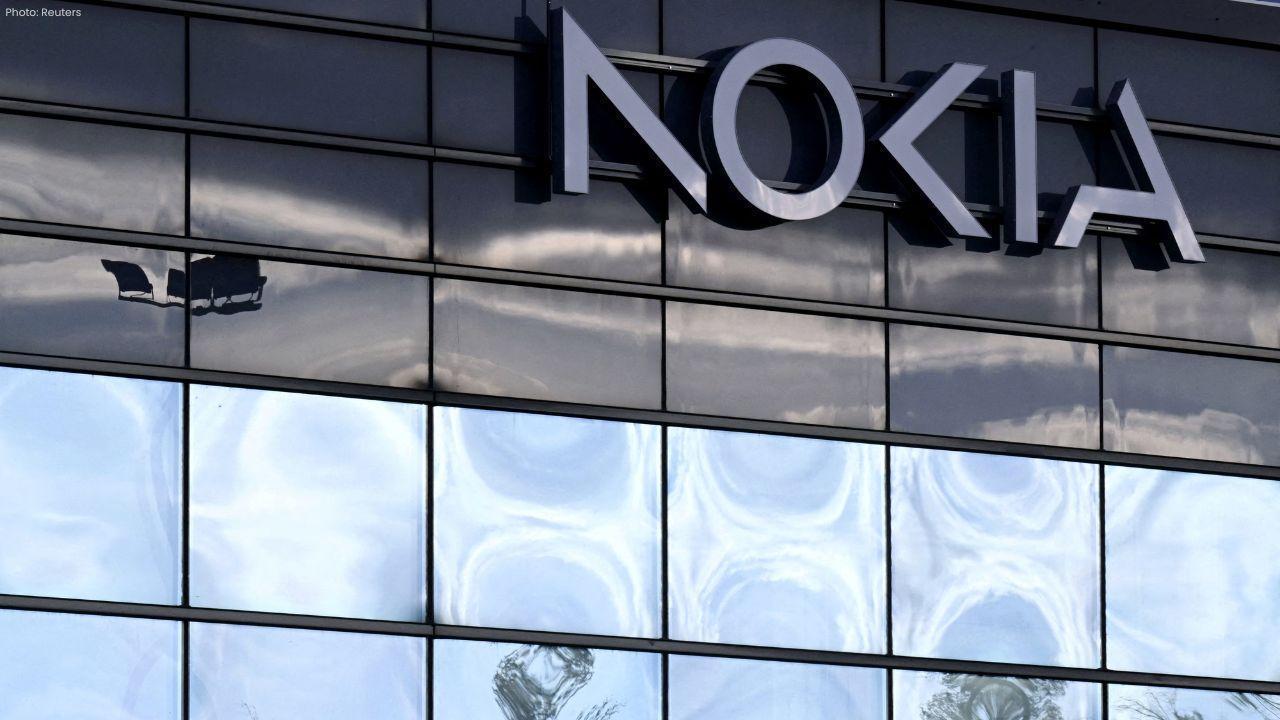
Join 10k+ people to get notified about new posts, news and tips.
Do not worry we don't spam!

Post by : Anis Farhan
In today’s fast-paced corporate environment, employee well-being is emerging as a central pillar of organizational success. While traditional wellness programs focused primarily on physical health, the spotlight is now shifting toward mental health. Companies are increasingly recognizing that integrating mental health initiatives into corporate wellness strategies is essential not only for individual employees but also for overall business productivity, engagement, and long-term sustainability. As we move further into 2025, corporate wellness programs are evolving, combining technology, personalized care, and cultural transformation to support mental well-being at every level of the workplace.
Mental health challenges are no longer hidden issues; they are a recognized concern that affects employee performance, absenteeism, and organizational culture. Stress, burnout, anxiety, and depression have become significant workplace issues, affecting productivity and employee satisfaction. According to recent studies, organizations that actively support mental health see measurable improvements in performance, creativity, and retention.
The benefits of integrating mental health into corporate wellness include:
Reduced Burnout: Targeted programs help employees manage stress effectively, reducing fatigue and disengagement.
Improved Productivity: Employees with better mental health are more focused, efficient, and motivated.
Enhanced Retention: Organizations that prioritize mental well-being foster loyalty and reduce turnover.
Positive Workplace Culture: Mental health initiatives promote empathy, communication, and inclusivity.
Acknowledging mental health as an essential component of corporate wellness is no longer optional—it is a business imperative.
Corporate wellness programs in 2025 are holistic, integrating mental health into broader organizational strategies. Some key components include:
1. Employee Assistance Programs (EAPs):
EAPs provide confidential support for employees dealing with personal or professional challenges. Services often include counseling, stress management resources, and crisis intervention.
2. Mental Health Education and Training:
Workshops and seminars educate employees and managers about stress management, mindfulness, resilience, and recognizing signs of mental distress.
3. Flexible Work Arrangements:
Remote work, flexible hours, and hybrid models contribute to work-life balance, reducing stress and improving mental health.
4. Wellness Technology Platforms:
Apps and digital tools provide mental health assessments, guided meditation, cognitive behavioral therapy exercises, and mood tracking, empowering employees to manage their well-being proactively.
5. Onsite Wellness Facilities:
Corporate gyms, relaxation rooms, and quiet spaces allow employees to recharge physically and mentally during the workday.
By integrating these elements, organizations create comprehensive programs that address both the physical and psychological aspects of employee wellness.
Corporate wellness programs succeed only when leadership demonstrates commitment to mental health. Leaders play a critical role in shaping workplace culture, promoting open communication, and destigmatizing mental health issues.
Encouraging Open Conversations:
Managers who openly discuss mental health and share personal experiences normalize these discussions and create a supportive environment.
Leading by Example:
Leaders practicing mindfulness, stress management, and work-life balance set a model for employees to follow.
Supporting Mental Health Policies:
Policies addressing workload, flexible hours, and access to mental health resources reflect an organizational commitment to employee well-being.
Effective leadership transforms corporate wellness from a checkbox initiative into a sustainable, values-driven approach.
Technology has become a cornerstone of modern corporate wellness. Several innovative solutions are shaping mental health support in 2025:
AI-Powered Mental Health Apps: Personalized guidance, symptom tracking, and interactive exercises enhance engagement and effectiveness.
Virtual Counseling Platforms: Employees can access licensed professionals through video calls, text, or chat, removing barriers to care.
Wellness Analytics: Platforms provide anonymized data on stress levels, engagement, and productivity, allowing organizations to adjust programs proactively.
Digital Mindfulness Programs: Guided meditation, breathing exercises, and mental fitness challenges help employees manage stress in real-time.
These tools make mental health support scalable, personalized, and accessible, even in remote or hybrid work environments.
Stress is an inevitable part of modern work, but chronic stress leads to burnout, absenteeism, and decreased performance. Corporate wellness programs are increasingly focusing on strategies to prevent and address burnout:
Mindfulness and Meditation Sessions: Daily or weekly practices help employees reduce stress and improve focus.
Workload Management: Clear role definitions, realistic expectations, and delegation reduce pressure on employees.
Breaks and Micro-Rest Interventions: Encouraging regular breaks, power naps, or short walks boosts productivity and mental clarity.
Peer Support Networks: Connecting employees with peers for mentorship and support fosters community and reduces isolation.
Addressing stress proactively ensures employees remain healthy, engaged, and productive over the long term.
Resilience is the ability to adapt to challenges and recover from setbacks. Corporate wellness programs are increasingly including resilience-building initiatives such as:
Training in Coping Mechanisms: Workshops on handling stress, conflict resolution, and emotional intelligence.
Scenario-Based Simulations: Role-playing exercises to practice problem-solving in high-pressure situations.
Supportive Work Culture: Encouraging collaboration, recognition, and open communication reinforces resilience.
Personal Development Programs: Providing access to learning opportunities and skill-building enhances self-efficacy and confidence.
By fostering mental resilience, organizations help employees navigate change, uncertainty, and high-pressure situations effectively.
Measuring success is crucial to improving and sustaining wellness initiatives. Companies are now using a mix of quantitative and qualitative metrics to evaluate effectiveness:
Employee Surveys: Feedback on well-being, stress levels, and satisfaction provides insight into program impact.
Health Metrics: Tracking absenteeism, healthcare costs, and productivity data demonstrates measurable outcomes.
Engagement Rates: Participation in wellness programs indicates employee interest and perceived value.
Performance Improvements: Increases in output, creativity, and collaboration reflect broader program benefits.
Continuous monitoring allows organizations to adapt wellness strategies and ensure long-term benefits for employees and the business.
Looking ahead, corporate wellness programs in 2025 and beyond will be more integrated, personalized, and technology-driven. Key trends include:
Hybrid Wellness Models: Combining physical, mental, and digital support for holistic employee well-being.
Preventive Mental Health Care: Focus on early interventions and proactive strategies rather than reactive measures.
Diversity and Inclusion: Tailoring wellness programs to meet the unique needs of diverse employee populations.
Global Collaboration: Sharing best practices and insights across multinational teams to promote wellness universally.
Sustainable Wellness Practices: Integrating environmental and social factors into wellness initiatives, promoting overall organizational well-being.
These trends signal a shift from basic employee benefits to comprehensive, culturally aware, and impactful wellness programs.
Corporate wellness is no longer just an employee perk—it is a strategic priority that directly influences productivity, retention, and organizational success. Integrating mental health into corporate wellness programs is critical to creating resilient, engaged, and motivated teams. By combining leadership support, technology, education, and culture-driven initiatives, organizations can provide employees with the tools, resources, and environment they need to thrive. The evolution of corporate wellness in 2025 reflects a broader understanding: that employee well-being is not only a moral responsibility but a business imperative. Companies that embrace this shift will lead the way in building healthier, more productive workplaces that are prepared for the challenges of tomorrow.
This article is for informational purposes only and should not replace professional advice. Companies should consult mental health professionals, HR specialists, or wellness consultants before implementing new corporate wellness programs. Individual employee needs may vary, and program effectiveness depends on proper planning and implementation.










Mitchell Marsh Backs Aggressive Plan Ahead of India T20 Series
Australia captain Mitchell Marsh says his team will continue playing fearless cricket as they prepar

Smriti Mandhana Becomes World’s No.1 ODI Batter
India’s Smriti Mandhana rises to No.1 in ICC Women’s ODI rankings with a career-best rating of 828 a

Suryakumar Yadav Focuses on Team Spirit and Fielding Goals
India captain Suryakumar Yadav stresses teamwork, energy, and stronger fielding efforts ahead of the

Sherwood Leads Canucks to Overtime Win Against Oilers
Kiefer Sherwood scored twice, including an overtime winner, as Vancouver Canucks defeated Edmonton O

Freeman Leads Dodgers to 6-5 Thriller Over Blue Jays
Freddie Freeman’s 18th-inning walk-off homer gives the Dodgers a thrilling 6-5 win over the Blue Jay

Bayern Target Another Victory in German Cup Match
Bayern Munich look to continue their perfect start to the season with a German Cup clash against Col